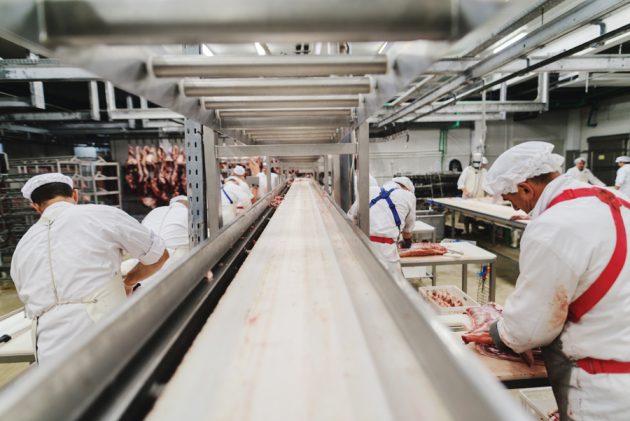
Focus on Food Safety: You can’t just build a plant, and assume it’s safe
By Dr. Amy Proulx
Food Safety Editor pick Food Manufacturing Photo © Dusanpetkovic1 / Adobe Stock
Photo © Dusanpetkovic1 / Adobe Stock It’s an exciting time for food businesses. During the past few years, many food service operators have pivoted to packaged goods, creating micro-businesses in the industry. Statistics Canada’s 2021 data indicates that of the 10,252 food manufacturing businesses identified in the country, 26 per cent employs less than four people, and another 64 per cent have less than 100. CFIA’s SFCR registry database lists more than 17,000 licensees in Canada, implying there are alternative food businesses, such as farm processors and hybrid businesses. Small and micro-businesses dominate the sector.
Michelle Lang, facilities manager at Venture Park Labs in Toronto, recently asked, “Many of my small business clients are building out facilities for manufacturing or bringing in different products into our food incubator space. It just seems that there are so many unknowns in these products’ compositions since they might inadvertently get into the food. Can you give some insights into the rules?” Firstly, please don’t pick up supplies for your food manufacturing space from a local store. There is a methodical process to follow before using any construction or non-food materials in the food manufacturing space.
Before jumping into the process, let’s understand the “why” behind it. In SFCR, the emphasis is on the licensed establishment to have validation or documented proof that the environment and the process are safe to produce food. The research process proving non-food materials is an important document record that could be called on by inspectors or auditors, so you must keep a record file proving that each non-food material is going to have minimal risk when used appropriately.
Accepted materials
Back in the day, there used to be a CFIA Letter of Acceptance process for non-food materials. Producers of materials, such as paints, packaging materials, glues for labels, caulking, lubricants, descaling treatments, boiler water treatments, construction materials, printer inks, and other non-food materials would submit reports to CFIA to describe the risks for food premises use. This process was phased out starting in 2014. However, remnants to that historical process still inform the way non-food materials are evaluated. First, CFIA recommends reviewing Health Canada’s Reference Listing of Accepted Construction Materials, Packaging Materials and Non-Food Chemical Products Database to evaluate the appropriate use of non-food materials. It’s not modernized so set aside time for manual searches. CFIA’s second approach is to have a Letter of Acceptance on file from the historical CFIA approval process. This would be available for older manufacturing facilities that were federally inspected historically. New startups, or plants recently brought into SFCR licensing would not have this option.
No objection
CFIA’s third approach is to identify if there is a Health Canada Letter of No Objection (LONO) for the materials in question. Manufacturers of non-food materials may apply to Health Canada for a LONO. The manufacturer subsequently distributes this letter upon request to food establishments for their record keeping. While Health Canada keeps a list of approved non-food chemicals, such as boiler water agents, it is best to ask the manufacturer for their LONO file.
CFIA’s last recommended approach is licensed food establishments should request a Letter of Guarantee (LOG) from the chemical or material manufacturer. This is becoming common, as more novel packaging materials and environmental solutions are being introduced.
This LOG would imply that the manufacturer has done a rigorous evaluation on their own to ensure the materials are suitable for food premises or food contact under appropriate conditions.
Packaging materials are part of this whole process. We’re seeing an uptick in novel packaging for environmental improvement. As a food premise, make sure to request information for record keeping and to validate appropriate use in food systems depending on how your product is being used at the manufacturing, distribution, and consumer levels.
In conclusion, while you can buy materials from a local store, you must do your homework first.
Check the databases and make phone calls or e-mails to the manufacturer to verify compliance. To manage your SFCR records, retain a copy of a valid document demonstrating safe use.
Dr. Amy Proulx is professor and academic program co-ordinator for the Culinary Innovation and Food Technology programs at Niagara College, Ont. She can be reached at aproulx@niagaracollege.ca.
This article was originally published in the August/September 2022 issue of Food in Canada.
Print this page